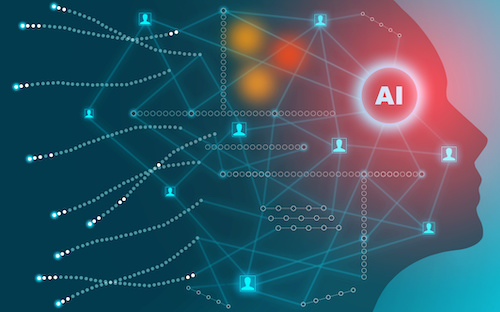Key points:
- AI is a catalyst for a more dynamic and effective educational paradigm
- Learn about the benefits of AI in education
- Discover more about why AI in education is essential for learning
The role of AI in education marks a profound shift in teaching and learning. Beyond automation, AI shapes personalized learning, adaptive assessments, and innovative content creation. Explore how AI transforms traditional teaching methods, fostering a more dynamic and tailored educational experience for students and educators alike.
What is the role of artificial intelligence in teaching and learning?
The role of artificial intelligence in education reshapes teaching and learning in innovative ways. AI serves as a facilitator of creativity by generating interactive learning materials, such as simulations and virtual labs, enhancing content beyond traditional methods. Moreover, it plays a pivotal role in shaping collaborative learning environments. AI-driven tools promote communication and teamwork among students, fostering interactive discussions and group projects. The role of AI extends to the development of adaptive assessments that evaluate not only factual knowledge but also critical thinking skills. This broader approach to assessment provides a more comprehensive understanding of students’ abilities. AI, in this context, acts as an enabler of holistic education, enriching the learning experience through creativity, collaboration, and comprehensive assessment methods, ultimately preparing students for the multifaceted challenges of the future. This multifaceted role positions AI as a catalyst for a more dynamic and effective educational paradigm that extends beyond conventional teaching methodologies.
How is artificial intelligence used in teaching?
Artificial Intelligence (AI) is applied in teaching across various facets, transforming traditional educational approaches. One significant application is content creation. AI education tools facilitate the development of interactive and adaptive learning materials, including virtual labs, simulations, and educational games. These resources engage students in innovative ways, making learning more dynamic and enjoyable.
Moreover, AI supports the personalization of learning experiences. By analyzing individual student data, AI tailors educational content to cater to diverse learning styles, preferences, and capabilities. This adaptability ensures a more customized and effective educational journey for each student.
Additionally, AI plays a role in collaborative learning environments. Virtual assistants and chatbots powered by AI facilitate communication and teamwork among students, promoting interactive discussions and group projects.
Furthermore, AI contributes to data-driven decision-making for educators. By analyzing patterns in student performance, AI provides valuable insights that inform instructional strategies, curriculum development, and overall improvements to the educational system.
In essence, AI in teaching transforms content creation, personalizes learning experiences, fosters collaboration, and supports data-driven decision-making. These applications collectively contribute to a more dynamic, efficient, and student-centric educational environment.
What AI helps in education
Looking at the future of AI in education, AI tools will serve as catalysts for transformative advancements. AI helps personalize learning experiences by analyzing individual student data, tailoring educational content to unique needs. Virtual tutors and AI-driven tools offer immediate support, fostering independent learning and critical thinking skills. Moreover, AI contributes to content creation, generating interactive learning materials like simulations and virtual labs that make education more engaging. Administrative tasks are streamlined through AI automation, allowing educators to focus on interactive teaching methods. AI analytics provide valuable insights into student performance, guiding data-driven decision-making for continuous improvement. Collaborative learning environments benefit from AI-driven tools that facilitate communication and teamwork among students. These diverse applications collectively enhance the educational landscape, offering personalized learning, innovative resources, and valuable insights for educators and students alike.
How can teachers use AI in the classroom?
Teachers can leverage the role of AI in education to enhance classroom dynamics and enrich the learning experience in several ways. Firstly, AI-driven educational tools can facilitate personalized learning. These tools analyze individual student data to tailor instructional content, accommodating diverse learning styles and preferences.
Additionally, virtual tutors powered by AI can provide real-time support, offering immediate feedback and assisting students with questions. Teachers can integrate AI-generated content, such as simulations and virtual labs, into lessons to make subjects more interactive and engaging.
AI can also aid in administrative tasks, automating routine activities like grading and attendance tracking. This allows educators to devote more time to direct student interaction and instructional creativity.
Furthermore, teachers can use AI analytics to gain insights into student performance trends. This data-driven approach helps identify areas for improvement, allowing for more informed decision-making and personalized interventions.
In summary, teachers can use AI in the classroom to personalize learning, provide real-time support, integrate interactive content, streamline administrative tasks, and make data-informed decisions. The strategic incorporation of AI technologies empowers educators to create a more adaptive, engaging, and effective learning environment for their students.
Conclusion
The role of AI in teaching and learning transcends automation, tutoring, and personalization. AI redefines education by fostering creativity through innovative content creation, shaping collaborative learning environments, and facilitating comprehensive assessments. Its multifaceted role as a catalyst for dynamic and effective educational paradigms positions AI as an invaluable tool in preparing students for the challenges of the future. The integration of AI marks a transformative shift, enriching the educational experience for both educators and learners alike.
- Classroom Learning - April 5, 2024
- Advantages and Disadvantages of Classroom Management - April 5, 2024
- What are Disadvantages of Classroom Management? - April 5, 2024

